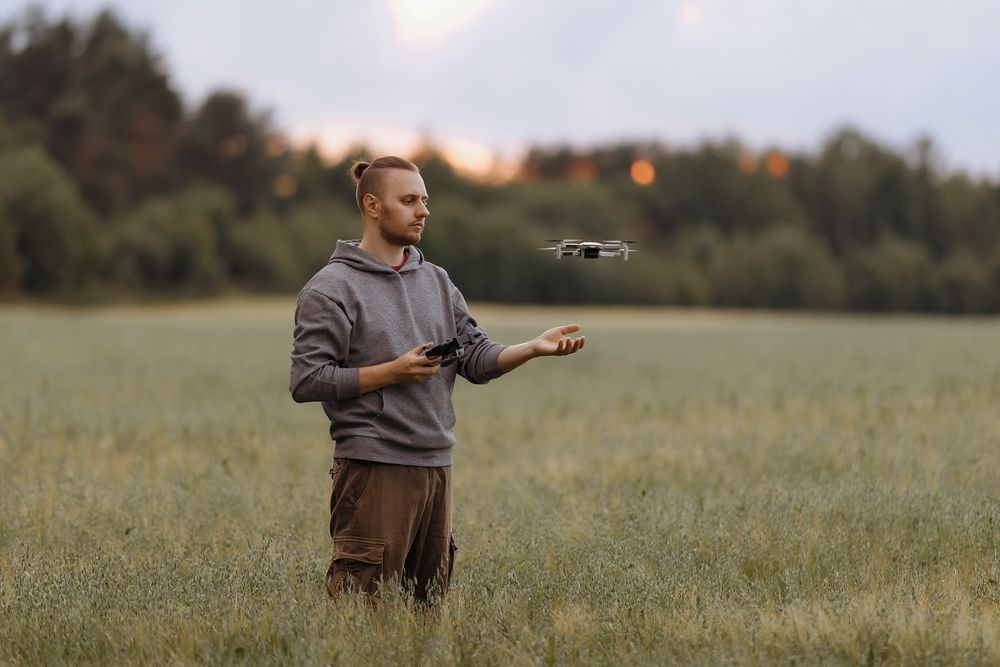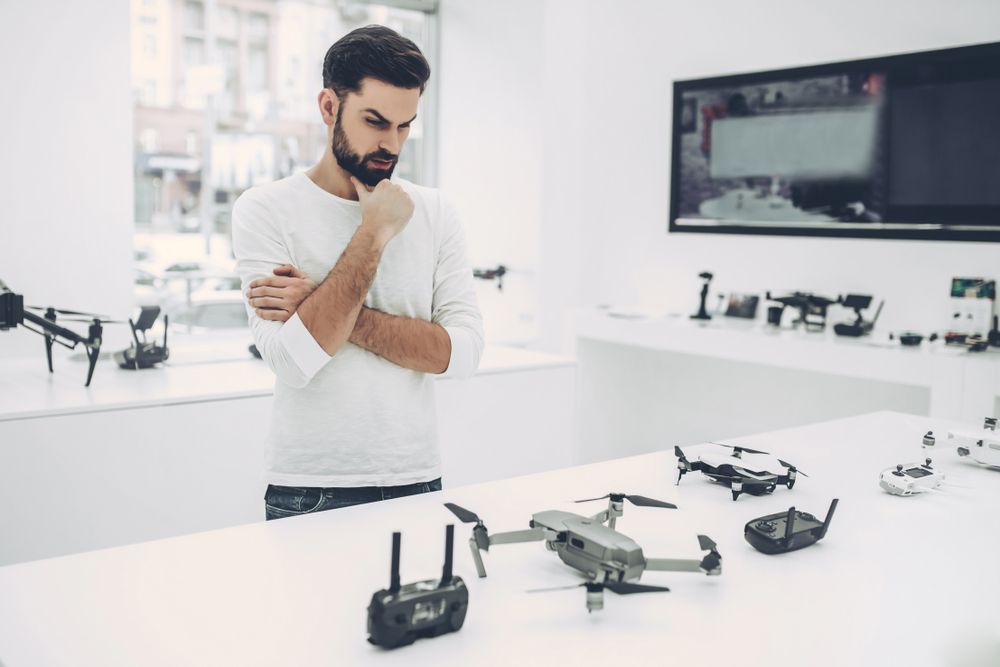Drones have soared in popularity, transforming from niche gadgets for hobbyists into versatile tools used by photographers, videographers, farmers, realtors, and countless other professionals. Meanwhile, casual enthusiasts use drones purely for fun—capturing stunning aerial shots or racing at high speeds. Whether you’re new to the drone market or looking to upgrade, choosing the right model can be daunting. This guide will walk you through the most important factors to consider when buying a drone, from budget and features to regulations and safety.
1. Clarify Your Purpose and Budget
Why It Matters
Not all drones are created equal. Some excel at professional-grade cinematography, while others are perfect for weekend excursions. Defining how you plan to use your drone—leisure, photography, videography, racing, or business—will narrow down which features you need.
Key Considerations
- Photography/Videography: Look for drones with high-resolution cameras, gimbals for stabilization, and intelligent flight modes (like Follow Me or Orbit).
- Recreational Flying: Beginners might opt for cheaper models to learn the basics. Look for easy controls, good battery life, and sturdy construction to withstand a few bumps.
- Racing: Racing drones typically prioritize speed and agility over camera quality. They may also require building or customizing your rig.
- Agricultural or Industrial: You’ll want specialized payloads (like thermal cameras or spraying attachments) and advanced stability or autopilot modes.
Budget Range
- Below $200: Entry-level “toy” drones with simple controls and basic cameras—fine for casual practice but limited in range and features.
- $200–$800: Mid-range drones with better cameras, improved stability, and smarter flight modes. Great if you want to level up your footage or enjoy more reliable flight.
- Above $800: High-end or professional drones with 4K (or higher) cameras, advanced obstacle avoidance, long flight times, and sophisticated features for pro-level shoots.
2. Camera Quality and Stabilization
Why It Matters
A drone’s camera quality is a make-or-break factor if you’re aiming for cinematic shots or professional photography. Even if you’re just a hobbyist, a decent camera can enhance your experience.
What to Look For
- Resolution: Most mid-range to high-end drones offer 4K video, although Full HD (1080p) can still be adequate for social media or family videos. Photographers might also focus on megapixels and sensor size (e.g., 1/2.3-inch vs. 1-inch sensors).
- Frame Rates: If you plan on slow-motion footage, look for 60 fps or higher at your chosen resolution.
- Gimbal Stabilization: A gimbal corrects for drone movement, wind, and vibrations, producing smooth, jitter-free video. Three-axis gimbals are standard on higher-end drones, but cheaper models may only have two-axis or electronic image stabilization.
Pro Tip: Test footage on YouTube or review sites to gauge real-world camera performance before committing to a purchase.
3. Flight Time and Battery Life
Why It Matters
Drones typically have limited flight times due to battery constraints. Knowing how long your drone can stay in the air before needing a recharge (or battery swap) can save you from interruptions mid-flight.
Typical Range
- Entry-Level: 5–10 minutes per battery.
- Mid-Range: 15–25 minutes.
- High-End: 25–40+ minutes.
Key Tips
- Spare Batteries: Most drone owners buy extra batteries for longer sessions.
- Charge Speed: Check how quickly the batteries charge. Some models offer fast-charging hubs; others might require a few hours per battery.
Pro Tip: Consider the trade-off between flight time and portability. Larger drones often have bigger batteries for extended flight, but they may be bulkier to transport.
4. Range and Transmission Quality
Why It Matters
Range determines how far you can fly your drone while still maintaining a stable connection for control and video feed. A solid connection is crucial for both safety and capturing footage from long distances.
What to Look For
- Control Range: Entry-level models might only offer 50–100 meters, while advanced drones can exceed 6–8 kilometers (or more).
- Signal Type: Many higher-end drones use proprietary technologies (like DJI’s OcuSync) to reduce interference and latency. Wi-Fi-based transmissions are more common in budget drones but can be prone to dropout in urban areas.
- Live Video Feed (FPV): Look for stable, low-latency video transmission if you plan to fly using first-person view or shoot professional footage.
Pro Tip: Confirm that extended-range drones are legal to fly in your region. Some laws require drones to stay within the pilot’s line of sight.
5. Obstacle Avoidance and Safety Features
Why It Matters
Crashing is every drone pilot’s worst nightmare. Modern drones often include sensors that detect and avoid obstacles, which can be a lifesaver—especially if you’re piloting in tight spaces or tricky environments.
Key Safety Features
- GPS-Based Return-to-Home (RTH): Automatically brings the drone back to its takeoff point if the battery is low or if you lose signal.
- Front, Rear, and Downward Sensors: Detect obstacles in the drone’s path and navigate around or brake automatically.
- Geofencing: Prevents flights in restricted areas, like near airports.
Pro Tip: While obstacle avoidance can prevent many accidents, you should still practice manual control skills to handle unexpected situations.

6. Ease of Use and Flight Controls
Why It Matters
A drone’s learning curve can vary widely. Some are extremely user-friendly with built-in tutorials, while others demand advanced piloting skills.
What to Look For
- Beginners: Opt for a drone with stable hovering, altitude hold, or headless mode (where directions are relative to the controller).
- Controller Design: Some drones use smartphone apps as controllers, while others include dedicated controllers with physical joysticks. Consider which interface feels more intuitive.
- Intelligent Flight Modes: Follow Me, Orbit, Waypoint Navigation, and other modes can help you capture dynamic shots without micromanaging every movement.
Pro Tip: Check whether the drone has advanced autopilot features if you want hands-free filming. Just remember to maintain awareness and be ready to take manual control.
7. Portability and Build Quality
Why It Matters
If you plan to travel or hike with your drone, a compact, foldable model could be a game-changer. On the other hand, if durability is a priority for frequent or rough usage, you might opt for a heavier build with reinforced materials.
What to Look For
- Foldable Designs: These compress into backpack-friendly sizes. Perfect for travelers or outdoor adventurers.
- Materials: Lightweight plastics or carbon fiber can reduce weight, but watch out for flimsy builds prone to cracks. Heavier drones might be sturdier but can affect flight time.
- Weather Resistance: Some drones can handle light rain or wind better than others. Check official specs and user reviews to see how they perform in various conditions.
Pro Tip: If portability is your main concern, consider the trade-offs in battery size, camera quality, and overall stability.
8. Check Local Drone Regulations
Why It Matters
Drones operate in regulated airspace, and laws vary widely from country to country—and even city to city. Failing to follow the rules can result in hefty fines, confiscation, or worse.
What to Know
- Registration: Some countries require you to register your drone with aviation authorities, especially if it’s above a certain weight (e.g., 250g in the U.S.).
- Licensing: Commercial use often requires a pilot certification or special permit.
- No-Fly Zones: Restricted airspace typically includes airports, military bases, and national parks. Many drones have built-in geofencing to help keep you compliant, but you should confirm yourself.
Pro Tip: Before your first flight, read up on local drone laws to avoid legal headaches and ensure safe, responsible flying.
9. Maintenance, Repairs, and Customer Support
Why It Matters
Eventually, parts may wear out—propellers can break, batteries degrade over time, and firmware updates might introduce quirks. Knowing how easy it is to get replacements or customer support can save you from prolonged downtime.
What to Consider
- Spare Parts: Check whether propellers, batteries, and other common parts are readily available and affordable.
- Firmware Updates: Leading brands often release software updates that improve drone performance or fix bugs. Ensure that these updates are easy to install, stable, and well-documented.
- Warranty and Customer Service: Look up brand reputations for handling repairs or replacements. A solid customer support network can be invaluable if things go wrong.
Pro Tip: Brands like DJI, Autel, and Parrot offer extensive ecosystems of parts and accessories—often a safer bet than off-brand models with limited after-sales support.
10. Try Before You Buy (If Possible)
Why It Matters
You can read all the specs you want, but nothing beats hands-on experience. Many local hobby shops or drone clubs might let you test-fly a model.
How to Do It
- Visit a Demo Day: Some retailers or drone brands host events where you can see product demos.
- Drone Clubs or Communities: Local clubs are a goldmine for advice. Members might let you test their drones, giving you a sense of performance and controller feel.
- Online Reviews and Videos: If you can’t test in person, look for comprehensive reviews on YouTube, focusing on both the drone’s pros and cons.
Pro Tip: Pay particular attention to flight stability, video feed clarity, and how intuitive the controls feel in real-world conditions.
Buying a drone can unlock a new perspective on the world—whether you’re capturing breathtaking aerial landscapes, filming dynamic action scenes, or simply enjoying the freedom of flight. By zeroing in on your primary purpose (and budget), assessing camera quality, battery life, and safety features, you’ll narrow the options significantly. Don’t forget practical considerations like portability, maintenance, and legal regulations. Above all, take time to research and, if possible, test-fly a model before making your final decision. With the right drone in hand—and responsible piloting—you’ll be set to explore the skies and capture unforgettable moments.





